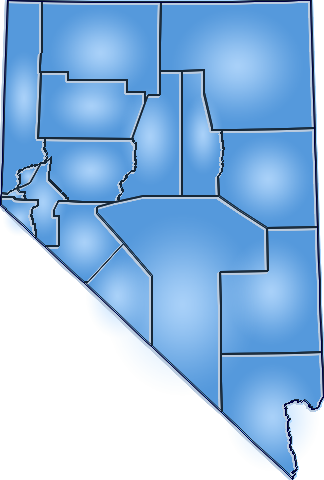Nonmetropolitan U.S. vs. Nevada Comparative Trends Analysis: Per Capita Personal Income Growth and Change, 1969-2022 Introduction  Nonmetropolitan U.S.: 2022 PCI = $50,917 Nevada: 2022 PCI = $62,085 Per Capita Income (PCI) is one of the most widely used indicators for gauging the economic performance and changing fortunes of local economies. It is used as a yardstick to assess the economic well being of a region's residents and the quality of consumer markets. It serves as a barometer for calibrating the economic performance of a region over time and to judge differences in relative economic prosperity between regions. Shifting trends in local per capita income growth have important social and political ramifications and significant implications in formulating local economic development strategies and initiatives. Data Definition: This measure of income is calculated as the total personal income of the residents of an area divided by the population of the area. Per capita personal income is often used as an indicator of consumers' purchasing power and of the economic well-being of the residents of an area. Personal income is measured as a flow throughout the year, while the measurement of population is at one point in mid-year. Therefore, per capita income is distorted if a significant change in population occurs during the year. For smaller counties in particular, per capita income in any given year may be exceptionally high or low for the short run because of unusual local conditions, such as a bumper crop, a catastrophe, or a major construction project as the building of a dam or nuclear power plant. Farm incomes are notorious for being especially volatile year-to-year, owing to changing weather, commodity market conditions, and alterations in government programs. Therefore, the per capita income of farm-dependent counties may exhibit sharp fluctuations over time. The presence of large institutional populations--such as residents attending a local college or the residents of a local prison or state mental institution--can significantly lower the per capita income estimates of an area. Such results may not reflect the relative economic well being of the non-institutional population and may mislead if care is not given to their interpretation. Nonmetropolitan U.S. Per Capita Personal Income, 1970-2022 Current vs. Constant Dollars  Figure 1. Figure 1 depicts the Nonmetropolitan U.S.'s annual per capita personal income over 1970-2022 in current and constant (2017) dollars. Constant dollar measurements remove the effects of inflation. They allow for comparison of changes in the real purchasing power of the Nonmetropolitan U.S. over time. When measured in current dollars, the Nonmetropolitan U.S.'s per capita personal income increased 1,482.87%, from $3,217 in 1970 to $50,917 in 2022. When measured in constant 2017 dollars to adjust for inflation, it advanced 169.62%, from $16,274 in 1970 to $43,878 in 2022. Real Per Capita Personal Income, 1969-2022  Figure 2. Figure 2 traces the Nonmetropolitan U.S.'s and Nevada's annual real per capita personal income for the period 1969-2022 to illustrate real per capita personal income patterns over time. During this 54-year period, the Nonmetropolitan U.S.'s real per capita personal income rose from $15,767 in 1969 to $43,878 in 2022, for a net gain of $28,110, or 178.28%. In comparison, Nevada's real per capita personal income increased from $25,140 in 1969 to $53,501 in 2022, for a net gain of $28,362, or 112.82%. In addition, the United States' real per capita personal income increased from $20,816 in 1969 to $56,419 in 2022, for a net gain of $35,603, or 171.04%. Real Per Capita Personal Income Indices (1969=100): 1969-2022  Figure 3. Figure 3 portrays the Nonmetropolitan U.S.'s real per capita personal income growth in a broader context by offering direct comparisons across time with Nevada, the United States. The growth indices shown here express each region's real per capita personal income in 1969 as a base figure of 100, and the real per capita personal incomes in later years as a percentage of the 1969 base figure. This method allows for more direct comparison of differences in real per capita personal income growth between regions that may differ vastly in size. The Nonmetropolitan U.S.'s overall real per capita personal income growth was 178.28% over 1969-2022 outpaced Nevada's increase of 112.82%, and topped the United States' increase of 171.04%. Per Capita Personal Income as a Percent of the U.S. Average: 1969-2022  Figure 4. Figure 4 portrays the trends for per capita personal income relative to the national average by tracing the Nonmetropolitan U.S. and Nevada per capita personal income as a percent of the national average over 1969-2022. In 1969, the Nonmetropolitan U.S.'s per capita personal income amounted to 75.75% of the national average; in 2022, it approximated 77.77%. Similarly, in 1969, Nevada's per capita personal income totaled 120.77% of the national average; in 2022, it consisted of 94.83%. Nonmetropolitan U.S. Real Per Capita Personal Income: Annual Percent Change, 1970-2022  Figure 5. Figure 5 displays the short-run pattern of the Nonmetropolitan U.S.'s real per capita personal income growth by tracking the year-to-year percent change over 1970-2022. The average annual percent change for the entire 53-year period is also traced on this chart to provide a benchmark for gauging periods of relative high--and relative low--growth against the backdrop of the long-term average. On average, the Nonmetropolitan U.S.'s real per capita personal income grew at an annual rate of 1.98% over 1970-2022. The Nonmetropolitan U.S. posted its highest growth in 1973 (10.08%) and posted its lowest growth in 2022 (-4.94%). In 2022, the Nonmetropolitan U.S.'s real per capita personal income declined by -4.94% Nonmetropolitan U.S. Real Per Capita Personal Income: Annual Percent Change and Decade Averages Over 1970-2022  Figure 6. Over the past five decades some nonmetropolitan regions have experienced extreme swings in growth, and often such swings have tended to coincide with the decades themselves. Figure 6 again illustrates the annual percent change in the Nonmetropolitan U.S.'s real per capita personal income since 1970, but this time they are displayed with average growth rates for the decade of the 1970s, 1980s, 1990s, 2000s, 2010s, and 2020-2022. During the 1970s, the Nonmetropolitan U.S.'s annual real per capita personal income growth rate averaged 3.00%. It averaged 1.63% throughout the 1980s, 1.90% throughout the 1990s, 1.60% in the 2000s, 1.68% in the 2010s, 2.26% thus far this decade (2020-2022). Real Per Capita Personal Income Growth: Average Annual Percent Change by Decade  Figure 7. Figure 7 compares the decade average growth rates for the Nonmetropolitan U.S. noted in the previous graph with the corresponding decade averages for Nevada and the nation. As the chart reveals, the Nonmetropolitan U.S.'s average annual real per capita personal income growth outperformed Nevada's average during the 1970s (3.00% vs. 2.20%), registered above Nevada's average in the 1980s (1.63% vs. 0.99%), fell below Nevada's average during the 1990s (1.90% vs. 2.08%), topped Nevada's average throughout the 2000s (1.60% vs. -0.29%), amounted to less than Nevada's average during the 2010s (1.68% vs. 2.15%), and amounted to less than Nevada's average over the 3 year period of the current decade, 2020-2022 (2.26% vs. 2.30%). Finally, relative to nationwide real per capita personal income growth trends, the Nonmetropolitan U.S. outpaced the nation during the 1970s (3.00% vs. 2.37%), fell below the nation during the 1980s (1.63% vs. 2.19%), recorded underneath the nation throughout the 1990s (1.90% vs. 2.01%), registered above the nation throughout the 2000s (1.60% vs. 1.10%), fell under the nation throughout the 2010s (1.68% vs. 1.97%), and registered above the nation over 2020-2022 (2.26% vs. 1.78%).
| Analysis Options Menu | ||||||||||||||||||||||||||||||||||||||||||||||||||||||||||||||||||||||||||||||||||||||||||||||||||||||||||||||||||||||||||||||||||||||||||||||||||||||||||||||||||||||||||||||||||||||||||||||||||||||||||||||||||||||||||||||||||||||||||||||||||||||||||||||||||||||||||||||||||||||||||||||||||||||||||||||||||||||||||||||||||||||||||||||||||||||||||||||||||||||||||||||||||||||||||||||||||||||||||||||||||||||||||||||||||||||||||||||||||||||||||||||||||||||||||||||||||||||||||||||||||||||||||||||||||||||||||||||||||||||||||||||||||||||||||||||||||||||||||||||||||||||||||||||||||||||||||||||||||||||||||||||||||||||||||||||||||||||||||||||||||||||||||||||||||||||||||||||||||||||||||||||||||||||||||||||||||||||||||||||||||||||||||||||||||||||||||||||||||||||||||||||||||||||||||||||||||||||||||||||||||||||||||||||||||||||||||||||||||||||||||||||||||||||||||||||||||||||||||||||||||||||||||||||||||||||||||||||||||||||||||||||||||||||||||||||||||||||||||||||||||||||||||||||||||||||||||||||||||||||

